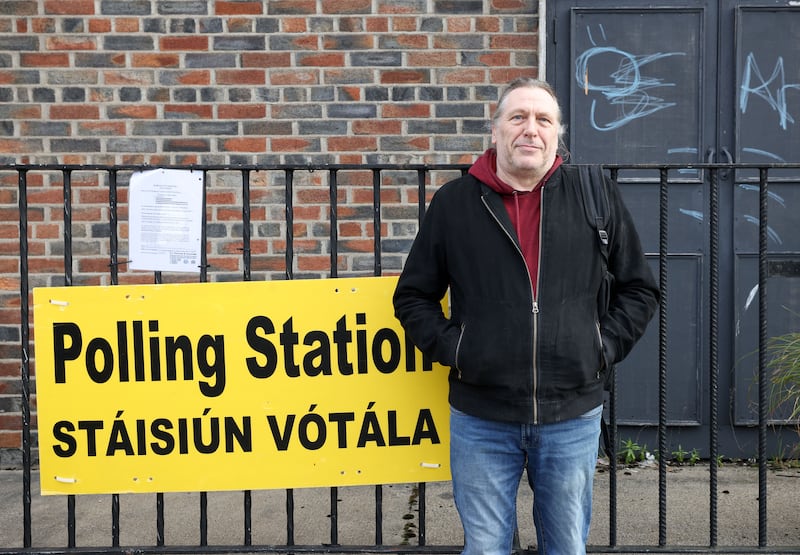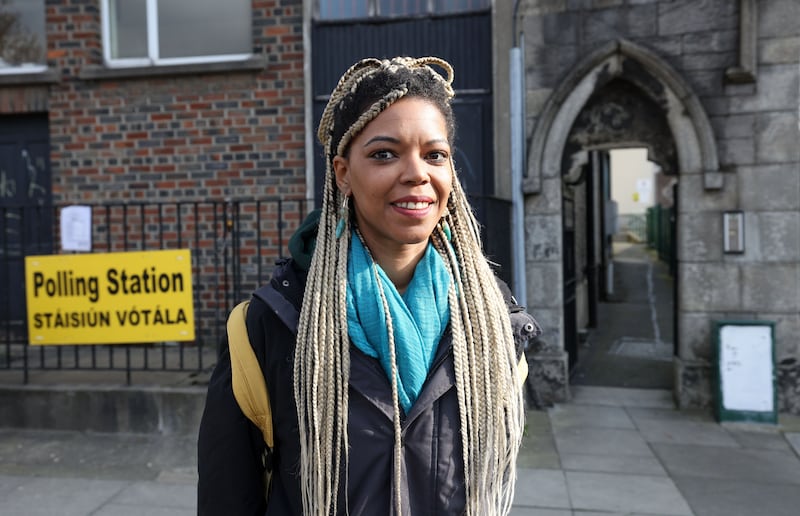It was a bright yet cold morning for north Dublin voters, as Stoneybatter residents made their way to the Stanhope Street National School polling station to cast their vote in the family and care referendums.
Turnout at the school was slow through the first few hours of Friday morning, with just 4 per cent of registered voters casting their votes by 10am. However, there was a steady flow of voters in the hour that followed, with old and young local residents arriving to take part in the referendum.
Lee Stott, a single father, said he voted Yes-Yes because “it’s time for a change”. “I’m the stay-at-home husband, I have been for a long time. Even my daughter sat down with me last night, she’s in Leaving Cert and she asked what I was voting. She said she’d do the same.” Despite the slow start to the day, Mr Stott believed there would be a strong turnout. “Irish people like referendums, I’ve been here long enough to realise that, I’m here 30 years.”
Elizabeth Pierce voted Yes-Yes because it would create more “inclusion” in the Irish Constitution, and “open it up” for women and carers. The language used by some No campaigns created confusion, while others had a “hidden motivation behind the No vote,” she said.
RM Block
‘They slapped it up on the board, we’re having a referendum on that date, and anyone you asked, they said keep an eye on the TV and radio and you’ll get your news. But I didn’t’
— Jim Kenny, voter at Stanhope Street National School in Dublin 7
Jim Kenny said he’d vote No-No because he “didn’t get enough information”.
“They slapped it up on the board, we’re having a referendum on that date, and anyone you asked, they said keep an eye on the TV and radio and you’ll get your news. But I didn’t.”

Noel Kinsella, who also voted No-No, agreed that it was difficult to understand the arguments on both sides. He also said the proposed replacement language was “too vague and not clear enough”.
“While I agree with the women and the care part, it’s still vague, it should be more specific,” said Mr Kinsella. “And it’s been shoved at us on International Women’s Day. International women’s day is all over the radio and they’re telling you to go vote for this for women and it’s not a fair assessment of what it should be.”
John Dunne said he voted Yes-Yes because the family referendum reflected “the direction that society is moving in” and the care referendum was “important”. However, a lot misinformation had created a lot of confusion, he added. “I’m not sure it’s the government’s fault and it’s very hard to state definitively in advance how the Supreme Court is going to interpret wording in the Constitution. So you can’t actually close off some of the questions that are out there.”
‘Women are everywhere in the workforce, not only as mums. And there are some women who don’t want to become mums and that’s okay. I voted yes to protect a fair society’
— Juliana Santos, voter at Stanhope Street
Helen Whelan voted No-No because she didn’t feel the proposed amendments were phrased properly. She also felt the turnout would be strong and said there was a flow of voters while she was casting her own vote.

Juliana Santos, who has lived in Ireland for 14 years, was voting in her second Irish referendum – her first was the 2015 same-sex marriage referendum. A Yes-Yes voter, she said the Constitution needed to change because the current document “goes totally against women’s rights and the world I fight for”. “I don’t think we should even need a referendum to make this change. Women are everywhere in the workforce, not only as mums. And there are some women who don’t want to become mums and that’s okay. I voted yes to protect a fair society.”
Nick Costello also voted Yes-Yes but acknowledged the wording proposed by Government to replace the current clauses was “confusing”. “It’s too easy to pick holes in,” he said. “So in the end I actually went with the bodies that represent women and then bodies who represent people who care in the home and what they were advising.”
- Listen to our Inside Politics Podcast for the latest analysis and chat
- Sign up for push alerts and have the best news, analysis and comment delivered directly to your phone
- Find The Irish Times on WhatsApp and stay up to date














